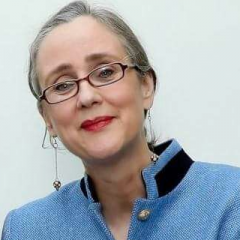I have studied Golden Age Dutch Floral Painters in the past and Rachel Ruysch (1664 – 1750) was one of my favourite painters. Not only did she paint extremely well, she had ten children. How can one paint so exquisitely and go through 10 pregnancies and raise so many children, is beyond me.

Her dated works establish that she painted from the age of 15 until she was 86, a few years before her death. She had household help, which she could afford because she was a well-paid artist (another remarkable fact) and painted, before her death at the age of 86, hundreds of paintings.
I like to point out that Dutch floral paintings are an illusion. We tend to overlook this because we can buy lush bouquets at our local supermarkets year-round and lack knowledge about when plants bloom and where they come from. We care little about seasonal vegetables and fruits; we also have not much knowledge about where our veggies and fruits come unless we study supermarket labels saying ‘Olives from Italy’ or ‘Persimmons from Israel’.

Sketches as reference photos
Golden Age floral painters studied flowers by making meticulous sketches and writing down which colours they needed. Upon designing a large floral bouquet, they returned to their notebooks and sketches. This way they were able to put together flowers that in nature do not bloom or flourish at the same time, or at the same place, and adding seasonal butterflies and insects, showing spring, summer and autumn in one painting. How easy it is now to consult a book or photo and put together flowers from all over the world, flowers that naturally never bloom simultaneously.
The difference between the Golden Age and now is that vegetables, fruits and flowers that are flown in aren’t good for keeping a low carbon footprint. Golden Age painters created illusions and prosperous bouquets not with the help of cargo trucks, cool cells or air crafts, but with their own notes and sketches. Isn’t that wonderful? Imagine a studio with sketches. Imagine the deep focus that comes with using your sketches as a reference portfolio. Having no digital assistance did not prevent painters to paint the most wonderful, detailed and beautiful paintings.
Paula Kuitenbrouwer
At Etsy and at Instagram
May I kindly ask, have you appreciate this blog post and are you enjoy my website? Perhaps you like to support it? I have a shop (see header) and at the end of most all my essays and articles I post one or two art cards on sale.





Two (2) Elegant Tulip Art Cards
Two professionally printed and double folded art cards by Paula Kuitenbrouwer. They comes with matching (white) envelopes. Free shipping.
€18.00
- The Artist’s Life
- Swedish Death Cleaning or Döstädning & Dementia
- Swedish Death Cleaning Part 3.
- Swedish Death Cleaning Part 2.
- Self Portrait



